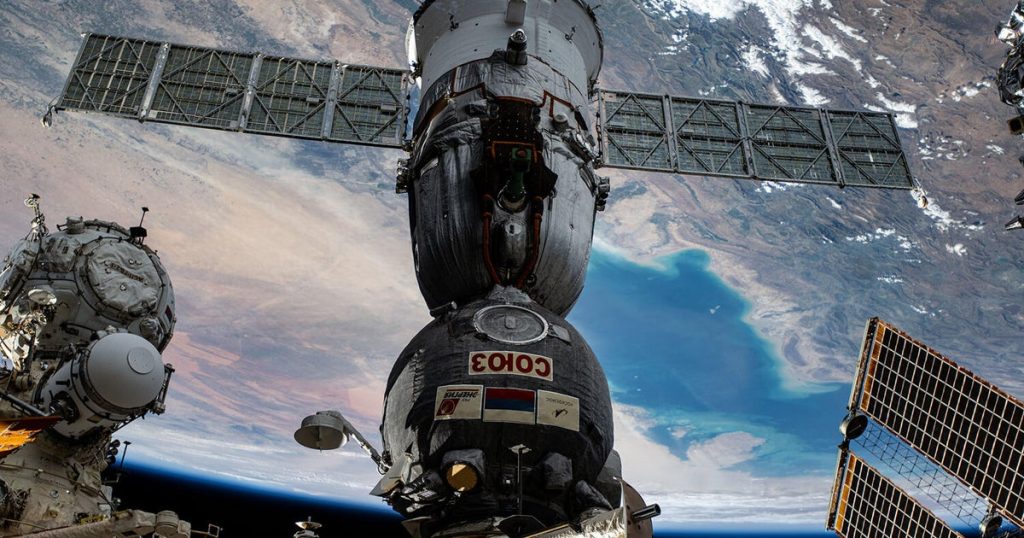NASA’s oldest active-duty astronaut, Don Pettit, along with two Russian cosmonauts, recently concluded a significant 220-day mission aboard the International Space Station (ISS). Just before his 70th birthday, Pettit and his crewmates, Alexey Ovchinin and Ivan Vagner, undocked from the ISS on Saturday evening and successfully returned to Earth. Their mission marked a pivotal moment not only for Pettit, who is celebrated for his extensive contributions to space exploration, but also as part of ongoing challenges facing the ISS program.
| Article Subheadings |
|---|
| 1) Historic Return Journey of the Crew |
| 2) Duration and Impact of the Expedition |
| 3) The Current State of the ISS |
| 4) Rising Risks and Challenges in Spaceflight |
| 5) Future of the ISS and Upcoming Missions |
Historic Return Journey of the Crew
On the evening of September 11, 2021, Don Pettit, Alexey Ovchinin, and Ivan Vagner undocked from the ISS at 5:57 PM ET, making their way back to Earth after a long-standing mission. The crew performed a series of checks and prepared for their descent, which culminated in a parachute-assisted landing in Kazakhstan. This departure was particularly significant for Pettit, as it aligned closely with his 70th birthday on September 12. The crew landed at 9:20 PM local time, or 6:20 AM ET, marking the end of a 220-day journey that contributed extensively to scientific research aboard the ISS.
Duration and Impact of the Expedition
During their time in orbit, the crew achieved a remarkable milestone, completing approximately 3,520 orbits around the Earth and covering an impressive 93.3 million miles since their launch from the Baikonur Cosmodrome in Kazakhstan on September 11, 2020. Ovchinin has now spent a cumulative 595 days in space over the course of four missions, while Pettit has logged nearly 590 days. Vagner, in comparison, has achieved 416 days aloft during two missions. This exemplary dedication represents a significant contribution to human space exploration and provides invaluable data for future missions.
The Current State of the ISS
The International Space Station, which has been continuously operational since November 2, 2000, faces a range of challenges as it approaches its scheduled retirement in five years. Issues such as air leaks in the Russian segment and concerns about uncertain funding and spare parts shortages threaten the longevity and safety of the ISS. According to experts, the ISS has entered one of its most precarious phases.
“Spaceflight is difficult and very risky,”
reported Rich Williams, a member of NASA’s Aerospace Safety Advisory Panel. He highlighted the increasing risks that accompany the ISS program, raising alarms about its current operational stability.
Rising Risks and Challenges in Spaceflight
Ongoing structural concerns, such as air leaks in the Zvezda module, have been attributed to metal fatigue from years of pressurization cycles. Williams noted that current risk mitigation strategies involve applying patching materials to known cracks and limiting pressurization cycles to minimize stress on the structure. Such measures are prioritized, as crew safety remains the utmost concern during operations. The risks have led experts to call for immediate attention and resources to ensure that the ISS continues to function effectively.
Future of the ISS and Upcoming Missions
As the ISS faces these challenges, plans for its future are also in motion. NASA has contracted SpaceX to develop a U.S. deorbit vehicle (USDV), which is vital for ensuring the safe re-entry of the ISS into Earth’s atmosphere in 2030. The USDV is designed to manage the station’s descent safely, minimizing potential risks to populated areas and maritime lanes. Despite the various challenges, NASA and Russian space officials are actively collaborating to develop solutions that ensure crew safety and operational integrity for upcoming missions.
| No. | Key Points |
|---|---|
| 1 | Don Pettit returns to Earth on his 70th birthday after completing a 220-day mission aboard the ISS. |
| 2 | The crew logged approximately 3,520 orbits and 93.3 million miles in space. |
| 3 | Challenges including air leaks and funding uncertainties threaten ISS operations. |
| 4 | Increased structural risks prompted a review of safety protocols and mitigation strategies. |
| 5 | NASA is developing a deorbit vehicle for the safe return of the ISS in 2030. |
Summary
The return of Don Pettit and his crewmates marks a significant chapter in NASA’s rich history of human space exploration. As they conclude their mission, the ongoing challenges faced by the ISS necessitate immediate attention to ensure safety and operational integrity. Their journey underscores the importance of rigorous space research and the continuous need for innovation in space travel to prepare for future missions.
Frequently Asked Questions
Question: What is the significance of Pettit’s return on his 70th birthday?
Pettit’s return coincides with a landmark personal achievement, as he is the oldest active astronaut, marking a notable moment in his celebrated career in space exploration.
Question: What are the current issues facing the ISS?
The ISS is experiencing air leaks, structural concerns, and funding shortages, raising alarms about its operational safety and longevity.
Question: How will NASA address the eventual deorbiting of the ISS?
NASA is developing a U.S. deorbit vehicle (USDV) to safely bring the ISS back to Earth in 2030, ensuring it breaks up over isolated ocean areas to avoid risks to populated regions.


